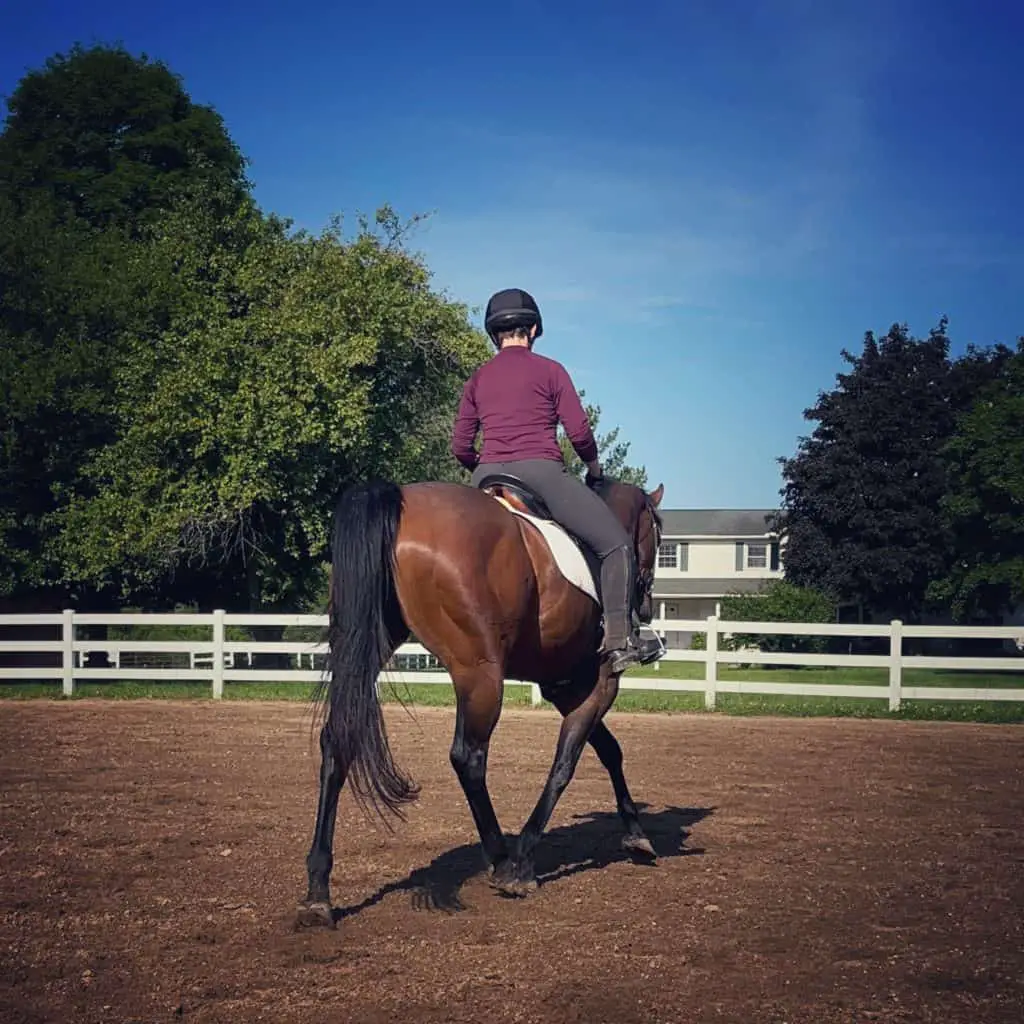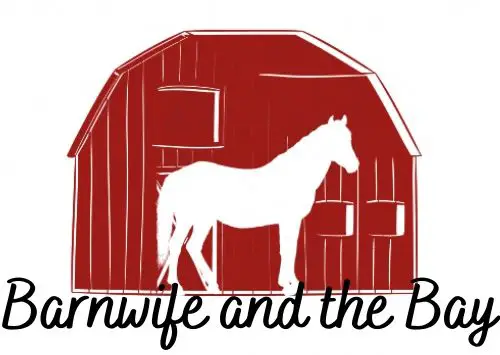
What makes a good dressage horse breed?
The most successful dressage horses have a strong back and powerful hindquarters to create energy and impulsion. A classical dressage horse breed is a highly athletic horse. They have long legs, or at least the ability to take long strides. An “uphill build” is important in a classical dressage horse expected to reach the highest levels of the sport. This conformation makes it easy for the horse to find the elevation in the shoulders necessary to perform advanced dressage movements. Naturally expressive movement is valued in a horse bred for dressage.
Dressage competitions demand highly specific and concentrated athletic effort.
Particular breeds are well suited to the athletic and stylistic demands of the sport of dressage.
Here is a list of some of the best dressage horse breeds, including those suited to Western dressage and non-traditional breeds that are still excelling at different levels of the sport.
Traditional dressage horse breeds
Most of the horses thought of as traditional dressage horse breeds are warmblood horses. These are the best horses for dressage. They can perform all the way up to Grand Prix level and win medals at the world’s biggest equestrian events, like the Olympic Games and World Equestrian Games. Modern dressage horses are almost all warmbloods from Europe. The finest dressage horse breeds must pass an inspection and performance test in order to be entered into the studbook and breed registry for their breed.
Dutch Warmblood
Warmbloods from the Netherlands are highly athletic and are bred to be easy to handle and ride. These are large warmbloods, usually standing between 16 and 17 hands.
Danish warmblood
These warmbloods are from Denmark, but warmbloods of other origins may be admitted to the registry if they pass the performance tests.
Irish sporthorse
This is an Irish warmblood created by crossing an Irish Draught with a Thoroughbred or warmblood. Usually the mare is an Irish Draught and the stallion is a Thoroughbred. Irish Sporthorses are perhaps better known as eventers than dressage horses, but can reach the top levels of dressage as well.
Westphalian horses
The Westphalian (or Westfalian) is a German warmblood. Many of the best warmbloods for dressage come from German stock. The silver medalist at the Tokyo Olympics in 2021, Isabell Werth, rode a Westphalian horse.
Oldenburg horse
Oldenburgers are another German warmblood breed. Many horses performing dressage at recent Olympics and World Equestrian Games have been Oldenburgers.
Hanoverian horse
The Hanoverian is yet another German warmblood known for its athleticism and good temperament.
Trakehner
This is a very pure breed. These horses were originally bred in Prussia, in a territory now belonging to Russia. Some Trakehners can be more spirited than other warmblood breeds. Jessica Von Bredow-Werndl of Germany won the gold medal at the Tokyo Olympics in 2021 on a Trakehner mare.
Swedish warmbloods
These warmbloods were created in Sweden by combining different bloodlines including Friesian, Spanish, Thoroughbred, Arabian and Hanoverian.
Belgian warmblood
Belgian Warmblood breeders put great emphasis on the high performance of their stallions, mares, and their offspring in dressage, jumping, and eventing.
Lipizzaner horses
Lipizzaners make the list of traditional dressage horse breeds because of their history performing classical dressage at the Spanish Riding School in Vienna, Austria. There they have traditionally performed the Haute Ecole movements of dressage, or “airs above the ground”. As the name suggests, these are movements where the horse leaves the ground. These include the capriole, the courbette, the mezair, the croupade and the levade. These movements are never required in dressage competitions.
Andalusian horses
The Andalusian, or Pure Spanish Horse, Like Lipizzaners, can be good at performing the so-called Haute Ecole movements of advanced classical dressage. They are used for the sport still today, but are not as prevalent at modern dressage competitions of the highest levels as are the warmbloods.
Lusitano horses
This is a Portuguese breed from the Iberian Peninsula, with many similarities to Lipizzaners and Andalusians. Each of these Spanish and Iberian horses are known for their excellent piaffe and passage. The Portuguese dressage team all rode Lusitano horses in the Tokyo Olympics in 2021.
Non-traditional dressage horse breeds
These horse breeds are not typically thought of as being bred specifically for dressage. They are usually not seen at the very highest levels of the sport. However, many of these breeds have characteristics that recommend them for different aspects of the sport of dressage. Indeed, many have found success even to a high level in classical dressage.
Selle Francais
The Selle Francais, or French Saddle Horse, is better known for its success in show jumping. However, with their aptitude for learning and natural impulsion, they can do very well in dressage as well. The Selle Francais may be a good choice for beginner riders, because of its easygoing and forgiving temperament.
Holsteiner horses
These horses are a very old breed of German warmblood horse. Like the Selle Francais, they are known for their jumping prowess, and do not always possess the quality gaits that make for the best dressage horses.
Gypsy Vanner
This breed is a beautiful, friendly, and docile horse. A great horse for a beginner or versatile all-around horse. Characterized as a Cob variety, the Gypsy Vanner is built like a draft horse, but smaller, averaging 14-15 hands. They are recognizable for their copious flowing feathers on their legs, and abundant manes and tails. The breed originated in Great Britain, from a combination of bloodlines including Shires, Clydesdales, and British ponies.
Irish Draught
Irish Draught horses are crossed with Thoroughbreds to create the highly athletic Irish Sport Horse. But the pure breed of Irish Draught is a very able learner, with the ability to excel in the lower levels of dressage. Irish Draughts are also very sensible and could make an excellent choice for beginning dressage riders.
Thoroughbred
The Thoroughbred is an athletic breed that usually has the long legs and long strides that you look for in a dressage horse. My own horse is a Thoroughbred, and we are looking to conquer our first dressage competitions within the next year.

My friend schools The Bay. She’s helping get her ready for our first dressage competitions.
Arabian horse
Arabian horses originated in the Arabian Peninsula, and are known for their spirit and toughness. They can have a naturally flashy movement that could be cultivated into flowing gaits of the quality expected in dressage.
Friesian horses
Thought by many to be the most beautiful horses in the world, Friesians can excel at many levels of dressage, but do not often make it to Grand Prix level or Olympic competitions. However, they often have a natural aptitude for collection and expressive movement.
Paso Fino
Paso Finos are gaited horses originating in the Caribbean and South America. People who love trail riding often love this breed because of their smooth ambling 4-beat gait. Gaits other than walk, trot, and canter are never called for in a classical dressage test, however. If your Paso Fino does any other gait during the test you will be marked down for sure. Paso Finos do have an aptitude for moving in collection, though. Breed shows showcase their special gaits in different degrees of collection.
Horse breeds suited to Western Dressage
Western dressage is an equestrian sport that combines the training principles of classical dressage with the Western tradition. Tests are ridden and judged similarly to those in traditional dressage, but Western attire is worn and Western tack is used. A style of movement in the horse more closely resembling a Western pleasure style is acceptable in Western dressage. That is, a flatter outline with less expression and lift to the gaits than would be expected in classical dressage. The Western Dressage Association of America is the organizing body of the sport. The tests are written by them specifically for Western dressage competitions.
Quarter horse
One of the most common breeds of horse in the United States, the Quarter Horse is a strong and athletic breed that excels in all Western disciplines. Originally bred to race over short distances, the Quarter Horse now uses its strong and muscular shoulders and hindquarters for cattle work, Western pleasure and any other Western discipline. They are perfectly suited to Western dressage, and can even succeed in classical dressage to certain levels.
Appaloosa horses
The Appaloosa is an American stock breed, like the Quarter Horse. They are characterized by distinctive “blankets” of spots on their hindquarters, and thin manes and tales. The Appaloosa is a versatile stock breed that does well in Western disciplines and Western dressage.
American Paint horse
Another American stock breed, the Paint Horse is known for its unusual coloring, and can be quite eye-catching in the show ring.
Morgan Horse
The Morgan Horse is the oldest American horse breed. It is not a stock horse, but was originally bred to pull carts and carriages. Morgans are usually solid browns or bays, and can have showier movement than the stock breeds. They have always been successful in Western pleasure disciplines, and are great for Western dressage too.
Conclusion
The goal of dressage, whether traditional or Western, is simply correct training. Dressage training is meant to cultivate a partnership between horse and rider, flexibility, and balance. At its most basic level, this is the foundation of any discipline. So whatever the breed, there is no question that dressage training is useful for any horse.
Like this article? Ready for more? Jump into these too!
